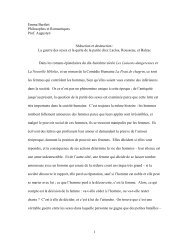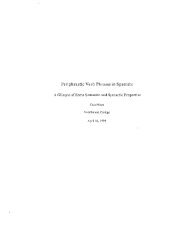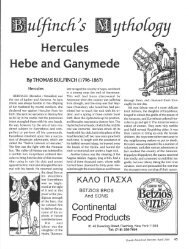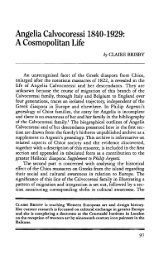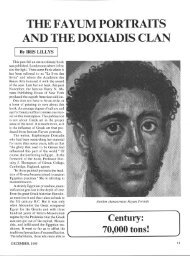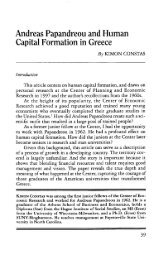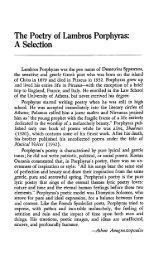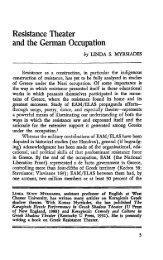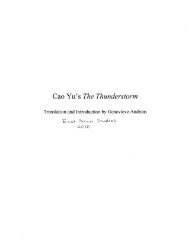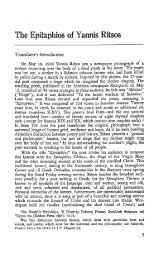Translating Neruda: Femininity and Sensuality ... - Triceratops Home
Translating Neruda: Femininity and Sensuality ... - Triceratops Home
Translating Neruda: Femininity and Sensuality ... - Triceratops Home
You also want an ePaper? Increase the reach of your titles
YUMPU automatically turns print PDFs into web optimized ePapers that Google loves.
Mueller 22<br />
most recent (published in 2004), but appears alongside only four of the Veinte poemas as<br />
a part of a broader collection dubbed The Essential <strong>Neruda</strong>. While for the purposes of<br />
this thesis I am not considering this poem within its broader context, it is instructive to<br />
note the context that the translators felt was important to the reader’s comprehension of<br />
the work. The rest of the poems in Veinte poemas serve to reinforce the sexual<br />
undertones of this poem, as they appear more explicitly elsewhere within the collection.<br />
The translator’s influence is evident in each of these versions before the poem<br />
even begins. <strong>Neruda</strong> left all of the poems in Veinte poemas untitled <strong>and</strong> merely<br />
numbered, but each translator here chooses to give the poem a title of some sort. This<br />
seems to be a domesticating decision to make <strong>Neruda</strong>’s poems conform to what seems to<br />
be st<strong>and</strong>ard practice for English poems in the twentieth century, with a title at the<br />
beginning that gives a general indication of the content to follow. Merwin, Eisner, <strong>and</strong><br />
Ossman <strong>and</strong> Hagen each use the first few words of the poem, either in English (Merwin),<br />
in Spanish (Ossman <strong>and</strong> Hagen), or each respective language in Eisner’s side-by-side<br />
edition. Previtali instead uses his translation of the second image of the poem, “Nets of<br />
Sorrow,” which serves to move the emphasis from the speaker (where it lies with the<br />
other three translators’ titles) to the objects the speaker holds. This choice complicates<br />
the underst<strong>and</strong>ing of the general subject of the poem, drawing the reader’s attention away<br />
from the woman who is the object of the speaker’s affection <strong>and</strong> instead to the metaphors<br />
that <strong>Neruda</strong> uses to demonstrate this sentiment.<br />
Each translator’s approach to the translation of <strong>Neruda</strong>’s “tardes” has an effect on<br />
the development of the narrative of the rest of the poem. The term is somewhat<br />
ambiguous, literally referring to “the time of day after noon but before twilight” or “the



